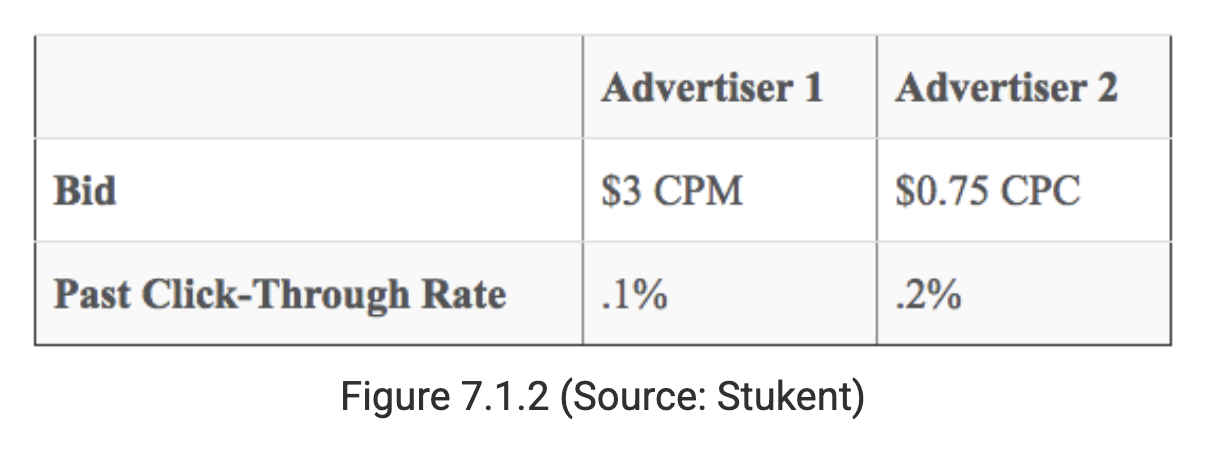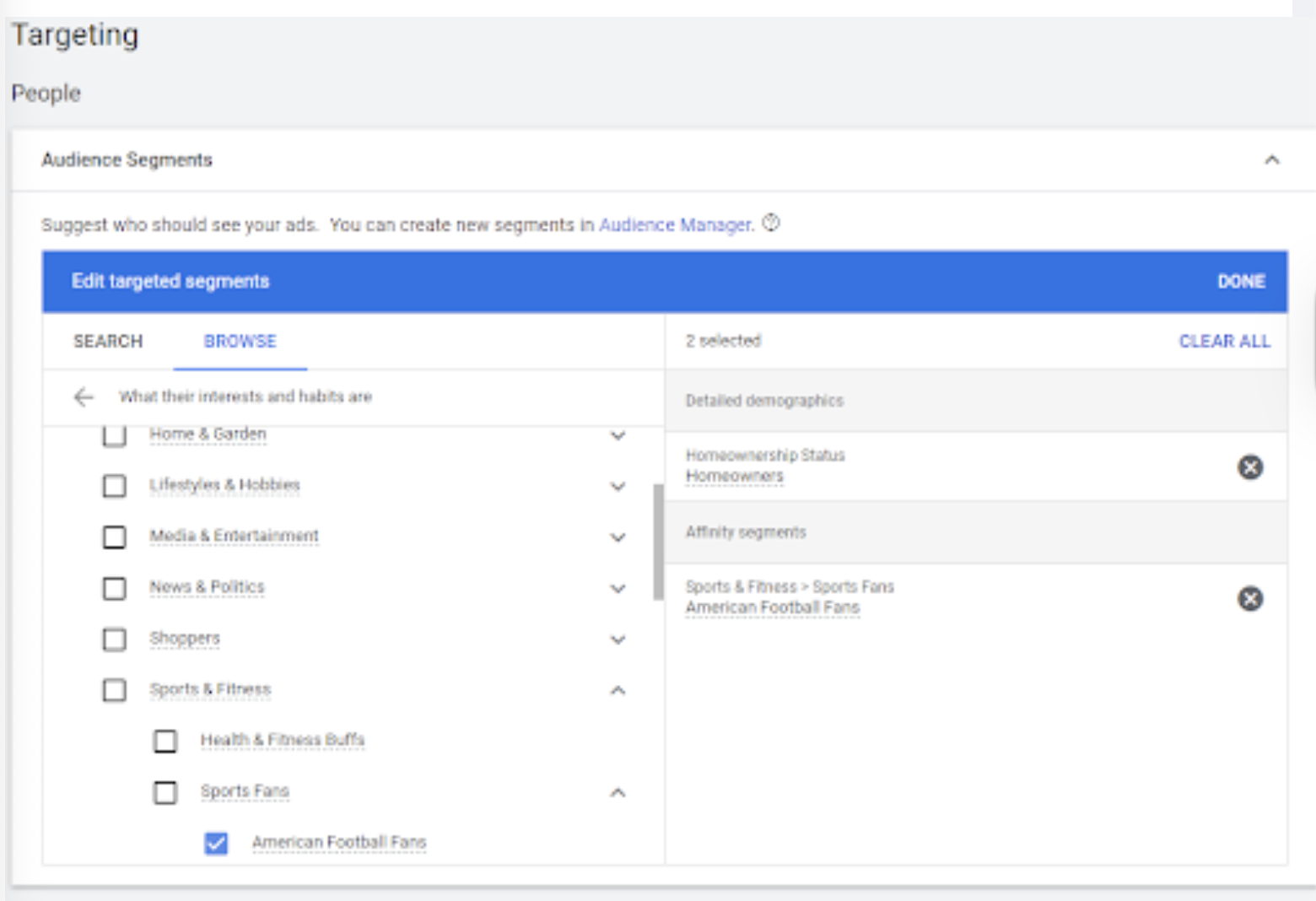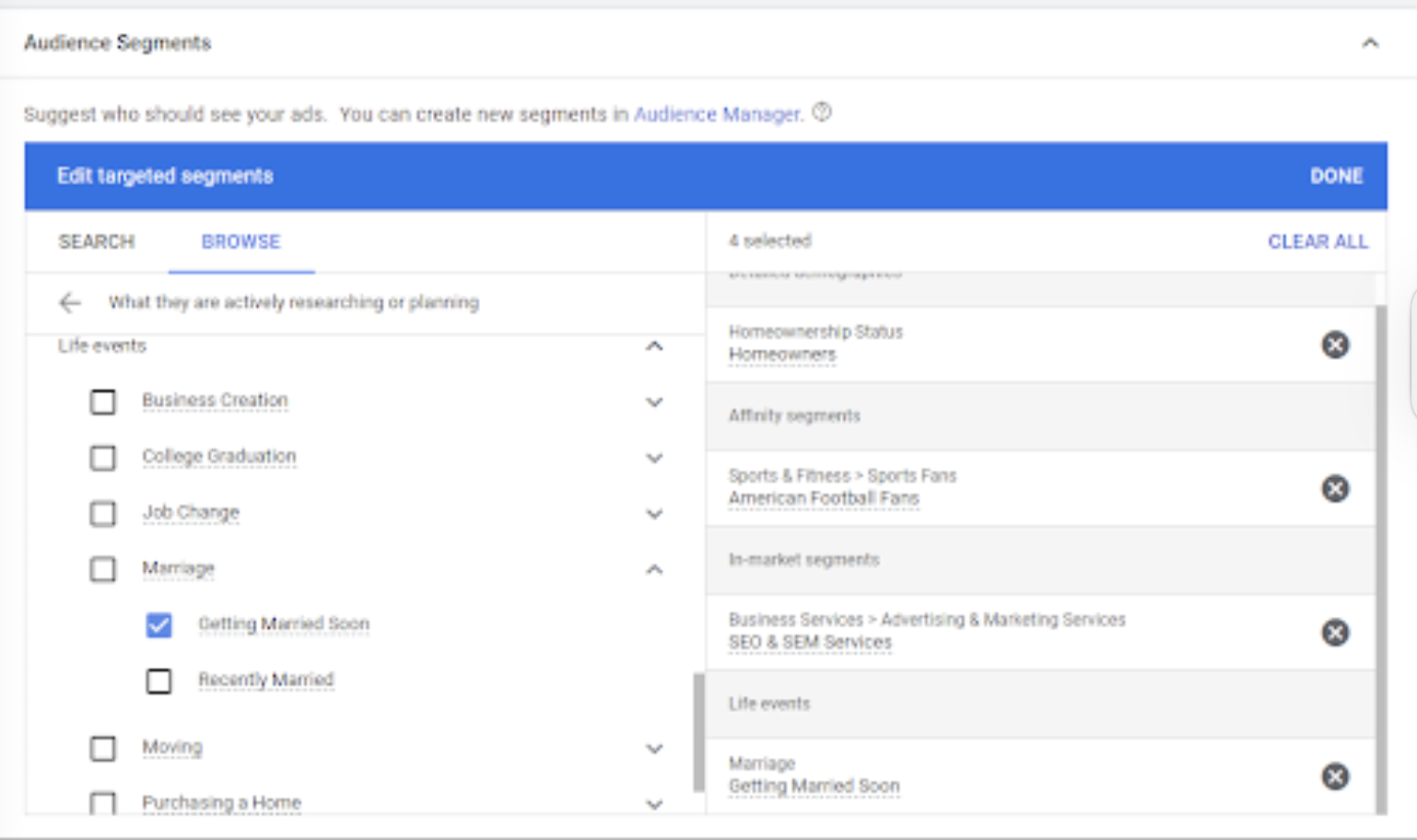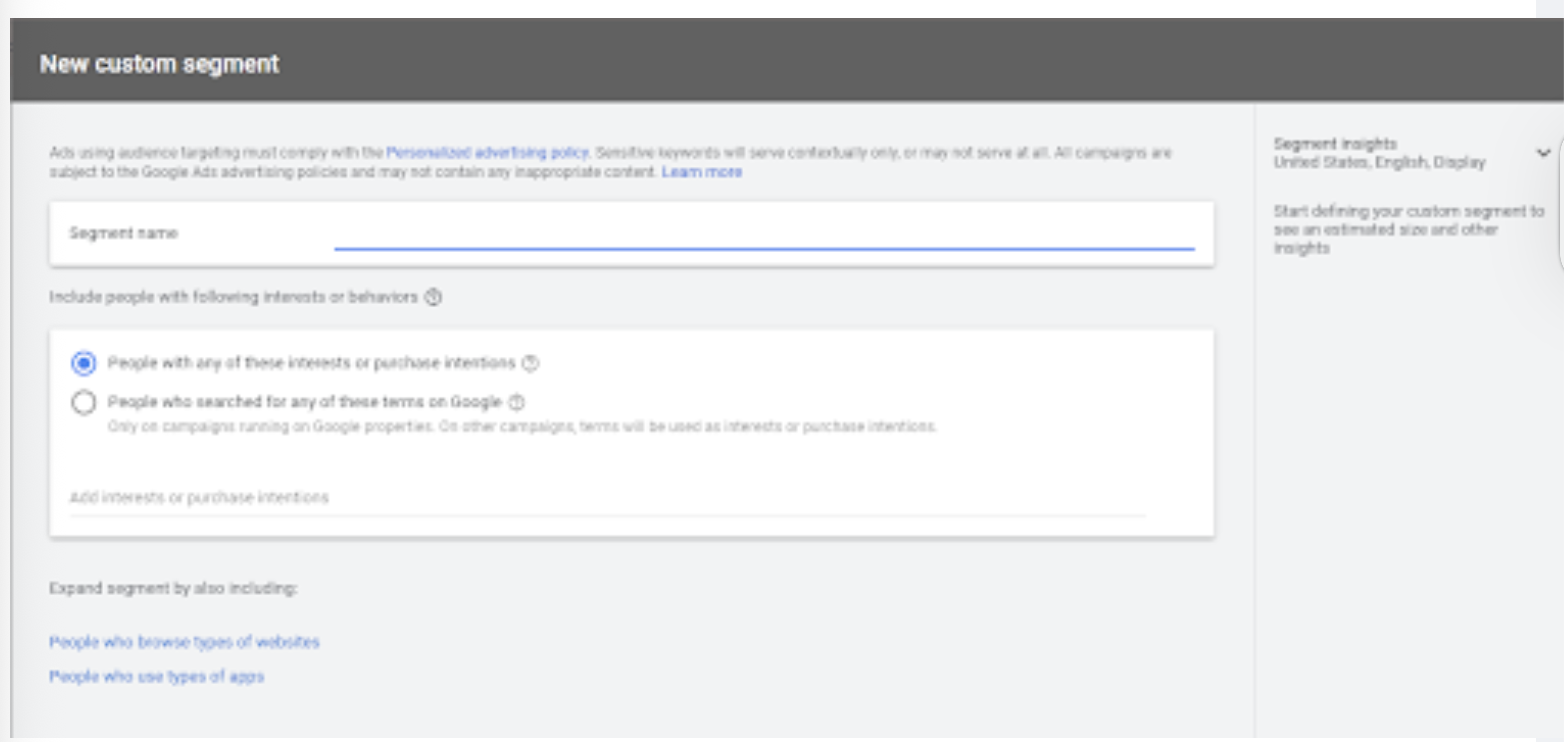Intro to digital marketing - Chapter 7: Display advertising
1/38
There's no tags or description
Looks like no tags are added yet.
Name | Mastery | Learn | Test | Matching | Spaced |
|---|
No study sessions yet.
39 Terms
Display network
Consists of a group of online publishers that agree to a set of advertising standards and ad size set by the company who coordinates what ads are displayed and at what time
Display network (con’t)
It collects payment from advertisers and pays publishers a portion of the advertising revenue; ad performance metrics to the advertisers
Publishers
Must create an account and meet the criteria set by the ad network as well as implement code given by the ad network; they’re paid a % of the revenue charged by the ad network and own the site
Advertisers
Creates and uploads content that meets the criteria of the display ad network and manages their budget provided by the display ad network; they also earn traffic, receive reports, and set parameters on what types of users they want to see their ads
How do the display network, publisher, and advertiser all benefit?
The advertiser makes money from traffic to the site
The display ad network makes money by charging the advertiser
The publisher gets a paid a % of the revenue each the display network charges the advertiser
The difference between bidding for a search ad and bidding for a display ad
Display ads have multiple bidding options
Cost per click (CPC) bidding
The advertiser only pays when the displayed ad is clicked
e.g. If an advertiser pays $0.50 CPC and gets 50 clicks, they would owe $25 regardless of how much the ad was shown
Cost per mile (CPM) bidding/ cost per thousand impressions
The payment method of traditional advertising
e.g. If a magazine charges $20 CPM for an ad and it circulates 250,000 times, the advertiser would have to pay $5000
Cost per action (CPA) bidding
Allows advertisers to pay only in successful conversions
e.g. A site that sells shirts would only have to pay $10 everytime an ad leads to a shirt purchase
How do ad networks compare multiple types of bids?
They track the click-through rates of advertisers so they can convert CPC bids into CPM bids

What must an effective display ad do?
Attract attention and get the reader to engage via bold colours and simple messaging
Communicate a good and unique value proposition
Have a call to action
Retargeting
Ads shown to users who have previously visited the advertiser’s site and can be very profitable for companies
e.g. When someone visits eBay.ca, the browser displays an ad for eBay when the user visits another site
How’s retargeting possible?
It’s done by site’s placing cookies onto a user’s browser, and the display network recognizes these cookies and displays ads from the site that placed the cookies on another site
A major advantage of online display advertising
Ads can be directly measured as companies will receive reports on ads from sites they bought ad space
The effectiveness of small changes in ads
Even the smallest of changes (e.g. changing text colors), can increase conversion and click through rates
Three ways keep ads consistent
Have the same value proposition(s)
Utilize similar calls to action
Have the same design elements (e.g. color scheme, characters, fonts, pics, etc
Setting display targets on Google Ads
Google will:
Set initial ad targets whose interests align with landing page content
Constantly update said targets based on ad performance
What can advertisers base their ads on?
Audience segments
Demographics
Keywords
Topic
Placements
Selecting display ad targets
Allows advertisers to pick people of a specific demographic to get their needs and pick segments based on their interests/habits

The 6 options for picking selecting display ad targets
Who they are
What their interests and habits are
What they’re researching or planning
How they interacted with your business
Combined audience
Customer audience segments
In-market audiences
Internet users who have been judged by Google based on their recent browsing history who are actively looking to buy something from a specific product category
Life events targeting
Lets advertisers target internet users who have just had, currently have, or will soon have an important event occur

Custom audience segements
Lets advertisers make a target segment and save it for future campaigns
e.g. If an advertiser determines their best audience consists of 10 targets, then the advertiser can save said list of targets, name it, and choose it for future campaigns

Combined audience segments
Lets advertisers combine custom audience segments to expand potential targets, narrow the targeting, or exclude certain segments

Fat-finger ad clicks
Accidental clicks on stuff that occurs due to poor placement
Consequences of fat-finger ad clicks and mobile display ads
Could lead to higher bounce rates and low conversion rates
What can be done if mobile display ads are found to be unprofitable?
They can be turned off or have their bids adjusted; verification of their unprofitably should first be verified
Ads that show up on the SERP (PPC)
Ads that show up when people search for keyword related phrases
Keywords targeted by advertisers
High CTR and CVR of 4%
High purchase intent
Actively searching
Ads that show up on webpages, apps, videos, etc
Ads that show up when other users are on the site
Advertisers target audiences, interests, and websites
Better for brand awareness
Low CTR and CVR 0.05%
Caters to those browsing instead of shopping
Competing for attention (i.e. reading an article)
Top of funnel marketing (TOFU)
The awareness stage of the AIDA model
Bottom of funnel marketing (BOFU)
The action (conversion) stage of the AIDA model
Middle of funnel marketing (BOFU)
The interest and desire stages of the AIDA model
What must the customer do in response to a display ad?
See the ad
Process the ad
Decide to investigate
Convert
Guidelines for effective ad copies
Attract attention
Communicate value proposition
Invite action
How to optimize banner ads
A/B Testing to maxmize KPIs like impressions, clicks, CTR, etc
What can banner ads be used for?
Selling something that’s visually appealing
How many sites have banner ads?
Over 200 million sites
Demand generation
Creating demand for an ad
Demand harvesting
Activities that increase the likelihood of a conversion from an already interested consumer